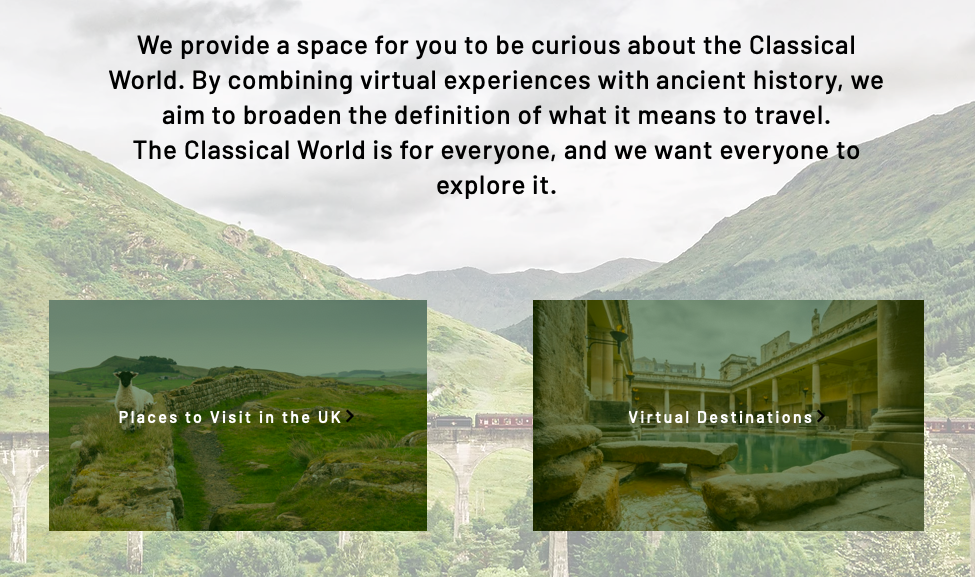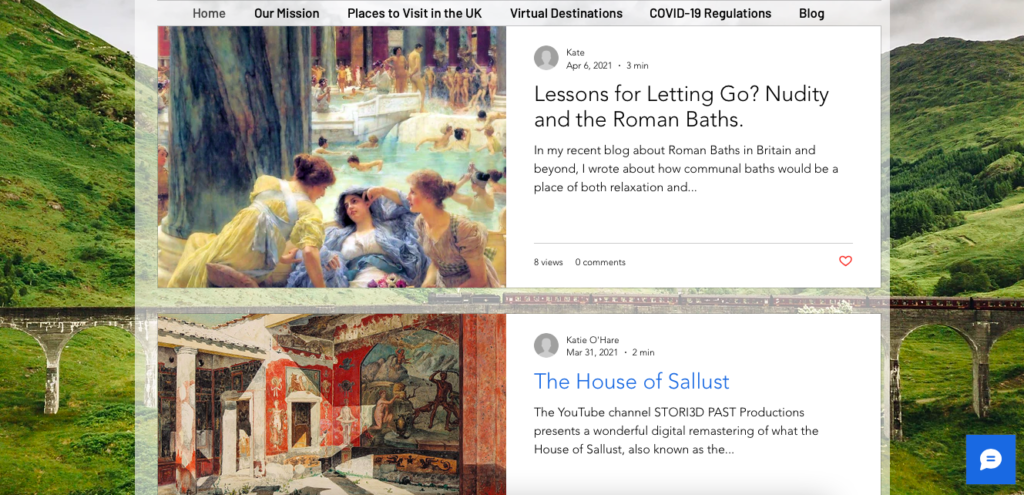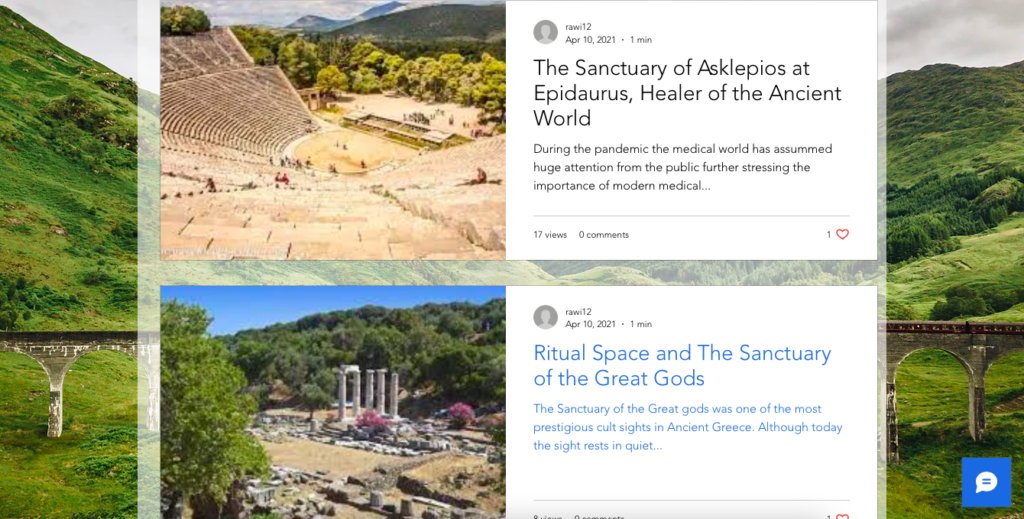Odyssey Britannia
In 2020, a team of three students – Kate Moran, Reese Waters, and Katie O’Hare – developed Odyssey Britannia, a virtual travel guide to Roman Britain. Developed during the Covid-19 pandemic, it was designed with two goals in mind: to give people unable to travel a chance to visit ancient Roman sites from the comfort of their homes, and also to stretch people’s perceptions and understanding of Roman culture and history.

Introduction
We are a non-profit and student-led blog dedicated to providing you with a road map to the ancient world, right from the comfort of your own home. Our aim is to make it as easy as possible to discover and explore the Roman Empire – in particular, Roman Britain. We do this by publishing short blog posts on ancient sites in the UK, while also offering a brief history of their significance and interesting features to look out for when you visit. Secondly, we offer links to external websites that virtually reconstruct classical monuments from locations all around the world. Our goal is to be your first choice when looking for accurate, reputable, and easily digestible information about the ancient world.

The inspiration for this project derives from the travel restrictions imposed on many people as a result of the Covid-19 pandemic. For months, people could not travel at all; and when restrictions began to ease, only local destinations were possible for some time. This meant that people in the UK began looking for interesting and new places to visit within their own community, while many dreamed of being able to go further afield. During the pandemic a large percentage of the workforce was also furloughed, with extra time on their hands to fill. We decided that this offered an excellent opportunity to get more people travelling (virtually) to the ancient world. And so Odyssey Britannia was born.
The internet is full of resources on ancient Roman sites, and search tools such as ‘google image’ enable us to ‘picture’ almost anything we want. Our website differs from these existing resources in two main ways: developed by Classics students, it draws on the latest research to offer reliable, up-to-date commentaries on the sites you can visit; and it actively encourages visitors to embark on an intellectual journey, not just a virtual one.
What do we mean by that? Roman ruins make for popular tourist attractions for several reasons: because they are impressively different and yet comfortingly familiar (Roman history is a regular staple of everyone’s education in the UK), and because they evoke a shared past that we are emotionally attached to. We love to trace our language, laws and many aspects of ‘British’ culture back to Roman times. While capitalising on all of that to draw visitors to our site, our goal is to unsettle our relationship with that Roman past, making it feel less familiar as well as better known. Through blog posts about Roman bath sites, theatres, domestic buildings, sanctuaries and so on, we not only introduce people to historic sites but also try to bust a wide range of myths about Ancient Rome – for example, writing about multiculturalism at Hadrian’s Wall, or propaganda on the Antonine Wall. Our aim is not to reinforce the assumptions that virtual visitors bring with them but to stretch them: to change ideas of antiquity via a series of intellectual journeys.

As our reading about ‘Applied Classics’ has helped us see, we should not treat antiquity as an exotic tourist attract but rather as a site of reflection, a place to ‘think with’ in relation to many modern issues. Our website also reflects on the pros and cons of virtual reality.

Why not visit our site and explore Roman antiquity for yourselves, with us as your guides! You can hear us talk about our project and read more about it below:
What do you think?

- What other ancient destinations would you include in our website, and why?
- What do visitors to ancient tourist sites usually want? New insights into antiquity? New insights into modernity? Both – or neither?
- Have you come across anything that you would describe as ‘Applied Classics’ in any ancient tourist sites (or similar websites!) that you have visited?
- What kinds of opportunities for more ‘Applied Classics’ projects can ancient tourists sites offer?